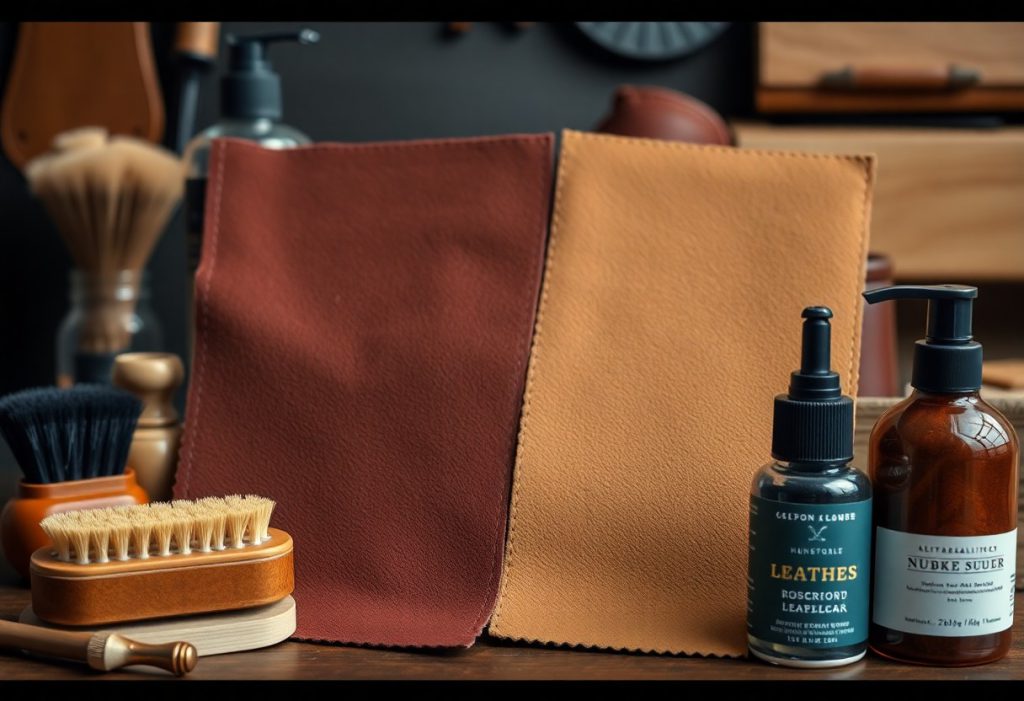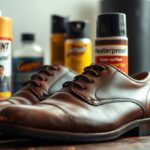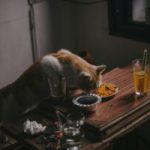Nubuck, suede, and roughout leather each have unique characteristics that greatly affect the durability and aesthetic appeal of your leather items. These materials are prevalent in a wide range of products, including trendy shoes and stylish jackets, each requiring specific care methods tailored to their properties. Nubuck is celebrated for its remarkable durability, which comes from its tightly packed grain structure, making it an excellent option for items subjected to heavy use. On the other hand, suede offers a softer and more luxurious feel, making it perfect for high-fashion items. Roughout leather is especially prone to water damage, necessitating additional protective measures. By understanding these differences, you can confidently choose the ideal leather type for your requirements and ensure proper upkeep. This detailed guide will help you identify each leather type and offer the best practices for maintaining your leather goods.

Uncover the Unique Qualities of Napped Leather Varieties
For enthusiasts and potential buyers alike, gaining a comprehensive understanding of the various napped leather types is essential for making well-informed purchasing decisions. These types include nubuck, split suede, full reverse suede, and roughout leather. Although they may seem similar at first glance, each type has its unique features and intended applications. Familiarizing yourself with these distinctions will empower you to select the most suitable leather for your specific needs and personal preferences.
| Type | Key Features |
|---|---|
| Nubuck | Sanded grain surface, durable |
| Split Suede | Made from corium layer, less durable |
| Full Reverse Suede | Full grain leather reversed, strong core |
| Roughout | Untreated corium surface, rugged texture |
| Care Requirements | Waterproofing needed for all types |
Delve into the Exceptional Attributes of Nubuck Leather
While nubuck may appear similar to suede, it distinguishes itself by offering exceptional durability due to its unique grain leather construction. The surface is lightly sanded to create a soft, velvety nap, which enhances its wear resistance compared to other napped leathers. This durability makes nubuck the preferred choice for consumers seeking lasting quality in their leather items, especially in environments where frequent use and exposure to wear and tear are anticipated.
Gain Insights into the Properties of Split Suede Leather
To truly understand split suede, it's essential to explore its origins, as it is derived from the corium layer of the animal hide. This leather type features loosely arranged fibers and a soft texture, making it very appealing to the touch, yet it demands careful maintenance due to its porous structure. The characteristics of split suede can vary widely based on the type of animal hide used and the specific processing techniques employed, ranging from lightweight fashion suede to heavy-duty footwear suede, each catering to different applications in both fashion and functionality.
Explore the Unique Features of Full Reverse Suede Leather
Understanding full reverse suede involves recognizing its particular construction, which consists of full-grain leather that has been turned inside out. This innovative process creates a suede-like texture while preserving the structural integrity of the original full-grain leather. The intact grain layer contributes to improved water resistance and durability compared to split suede, making it a favored choice for premium footwear and leather products that require both aesthetic value and functional reliability.
Full reverse suede is commonly found in high-end products, where its distinctive qualities offer a sophisticated appearance while ensuring lasting performance.
Investigate the Distinctive Features of Roughout Leather
The standout characteristics of roughout leather are its deliberately unrefined surface and exceptional durability. With a rugged texture that sets it apart from other napped leathers, roughout leather appeals to individuals who favor a more robust aesthetic. Its construction preserves the full hide structure, making it particularly well-suited for work boots and outdoor equipment, where resilience is essential. You will appreciate how this type of leather naturally ages, developing a unique patina that enhances its visual appeal over time.

Recognize Key Differences Among Leather Types for Smart Choices
Understanding the essential differences between nubuck, suede, and roughout leather is crucial when considering their construction and specific characteristics. Each type possesses unique properties that make them suitable for different applications and wear conditions. By grasping these distinctions, you can make more educated choices regarding your leather items, ensuring that you select the best options tailored to your lifestyle and personal needs.
| Feature | Characteristics |
|---|---|
| Origin | Grain layer vs Corium layer |
| Surface | Fine vs Coarse nap |
| Durability | High to moderate resistance |
| Maintenance | Regular to intensive care |
| Applications | Footwear to accessories |
Comparative Examination of Material Structures in Napped Leathers
Now, let's take a deeper look into how these leather types vary in their fundamental structures:
| Leather Type | Structure |
|---|---|
| Nubuck | Sanded grain layer |
| Suede | Split corium layer |
| Roughout | Reversed full grain |
Evaluating Surface Texture for Enhanced Understanding
To better comprehend the surface characteristics, it's essential to analyze the nap length and texture of each leather type. Nubuck features the shortest and finest nap, resulting in a smooth feel, while roughout exhibits a more irregular, coarse texture, contributing to its rugged appearance. These material differences in texture significantly impact how each leather type responds to wear and treatment, thereby affecting their overall care and longevity.
Notably, suede develops a unique patina as it ages, adding character to its look, while nubuck maintains a more uniform appearance throughout its lifespan, showcasing its durability and resilience.
Essential Durability Factors to Consider for Longevity
For those prioritizing longevity, it’s crucial to recognize the key factors that influence leather durability:
- water resistance varies significantly among leather types
- Wear patterns develop uniquely based on usage
- Structural integrity is determined by the specific leather type
Damage to the surface requires customized repair techniques for effective restoration.
Environmental factors also play a significant role in determining durability:
- UV exposure can affect color retention
- Temperature fluctuations can impact leather flexibility
- Moisture levels can influence overall material stability
When selecting protective treatments, ensure they are compatible with your specific leather type for best results.
Crucial Care and Maintenance Strategies for Napped Leathers
Unlike smooth leather, napped leathers require specific care techniques to maintain their texture and overall aesthetic. Your nubuck, suede, and roughout leather items need regular brushing, protection from moisture damage, and meticulous cleaning to uphold their unique attributes. These materials are more vulnerable to staining and water damage compared to smooth leather, underscoring the importance of a diligent maintenance routine.
Effective Cleaning Techniques for Napped Leather Goods
To clean your napped leather items effectively, utilize a specialized suede brush and work in a single direction to gently remove dirt from the surface. For tougher stains, a suede eraser can be particularly useful, and it is advisable to avoid water-based cleaning methods whenever possible. For deeper cleaning, it's crucial to use products that are specifically designed for your leather type, as traditional leather cleaners can adversely affect the nap and texture.
Protective Strategies for Enhancing Napped Leather Longevity
To protect your napped leather, using a high-quality water repellent spray will be your best line of defense. Treat new items before their initial use, and plan to reapply this protection every 3-4 months. This strategy helps form a protective barrier while allowing the leather to retain its breathability.
Understanding appropriate protection techniques is essential for extending the lifespan of your leather products. Regular upkeep includes vigilant inspections for wear spots, reapplication of protective treatments after intensive use, and avoiding direct heat or sunlight exposure. Tailor your protection strategy to suit how frequently you use your items, increasing the frequency of treatment for everyday wear.
Optimal Storage Guidelines for Napped Leather
When it comes to storing napped leather, careful attention to the environment is critical. It is advisable to keep your leather items in a cool, dry location away from direct sunlight. For footwear, using shoe trees can help maintain their shape, and stuffing bags with paper can provide additional support. Never store leather items in plastic bags, as they require proper ventilation to preserve their quality.
For long-term storage, opt for breathable cloth bags, ensure good air circulation, and regularly check for moisture or mildew. Aim for 40-50% humidity in the storage area to prevent the leather from drying out or developing mold. Keep items separated to prevent color transfer and to maintain their unique shapes.

Understanding Practical Applications and Uses of Different Leather Types
Your choice of nubuck, suede, or roughout leather profoundly impacts the durability and visual appeal of the final product. Each leather type serves distinct purposes based on its unique characteristics. Nubuck is particularly suited for high-durability applications, while suede provides a more flexible and softer option for fashion items, showcasing its versatility across various contexts.
Footwear Choices: Selecting the Right Leather Type
While all three leather types can be utilized for footwear, each has its own unique advantages. Nubuck excels in outdoor and work boots due to its unrivaled durability, whereas split suede serves as an excellent option for dress shoes and casual sneakers. Roughout leather, with its tough texture, is ideal for crafting high-performance hiking boots that effectively resist scuffs and scratches.
Garment Production: Choosing the Ideal Leather for Clothing
The applications of these leather types in garment manufacturing vary widely depending on their unique attributes. Suede is particularly well-suited for fashionable jackets, while roughout leather is favored for durable workwear that can withstand the challenges of daily use. Although nubuck is less frequently used in clothing production, it is an excellent material for protective panels in motorcycle gear.
For example, you’ll often find split suede used in lightweight jackets and vests, while roughout leather is commonly chosen for heavy-duty work shirts and pants. The choice of leather typically aligns with the intended function of the garment—fashion items generally incorporate softer suedes, while protective gear benefits from tougher nubuck or roughout varieties.
Accessory Design: Utilizing Leather Types for Unique Creations
These leather types also play an essential role in the crafting of various accessories. Nubuck is ideal for creating stylish watch straps and belts, while suede is well-suited for crafting attractive bags and wallets. Roughout leather is particularly effective for durable outdoor gear, such as backpacks designed for rugged environments.
With thoughtful material selection, you can develop accessories that align perfectly with their intended purposes. Split suede is best for decorative items, while nubuck and roughout are superior choices for products requiring high wear resistance. Always consider potential water exposure when deciding on the appropriate leather type for outdoor accessories.
Identifying Factors That Affect Leather Quality
It is crucial to acknowledge that the quality of napped leather is determined by several key factors, including hide selection, tanning methods, and manufacturing processes. The durability and appearance of the final product are heavily influenced by these critical considerations.
The Significance of Hide Selection for Leather Quality
To guarantee the best quality, it is essential to recognize that premium hides originate from animals raised in optimal conditions. These hides exhibit fewer surface imperfections and feature a more consistent fiber structure. The quality of your leather begins with selecting hides that have minimal scarring and are of suitable thickness, which greatly impacts the finished product.
The Impact of Tanning Methods on Leather Attributes
The tanning process, whether it involves vegetable or chrome tanning, has a significant impact on the final quality of the leather. Each technique imparts distinct characteristics regarding water resistance, flexibility, and color absorption. This crucial stage demands meticulous control over temperature, pH levels, and chemical concentrations, as the durability and texture of your leather are directly influenced by these carefully monitored conditions throughout the extensive 4-6 week tanning period.
Manufacturing Techniques That Influence Leather Quality
During the production of napped leather, specialized buffing techniques are utilized to create the distinctive surface texture. The final appearance of your leather is significantly shaped by the depth of buffing and fiber exposure during this stage. A consistent manufacturing approach is vital for ensuring even nap height and direction, as these elements directly correlate with the leather’s wear resistance and overall visual appeal.
Evaluating the Strengths and Weaknesses of Napped Leather Types
Each type of napped leather possesses unique traits that make it suitable for various applications. Your choice between nubuck, suede, and roughout leather should be influenced by your specific needs and intended use, ensuring you select the most fitting option for your circumstances.
| Pros | Cons |
|---|---|
| Unique aesthetic appeal | Requires regular maintenance |
| Soft, comfortable texture | More susceptible to water damage |
| Good breathability | Shows wear marks easily |
| Various color options | Needs special cleaning products |
| Versatile applications | Higher maintenance costs |
Recognizing the Benefits of Each Napped Leather Type
Each type of napped leather offers specific advantages tailored to different needs. Nubuck provides exceptional durability thanks to its tightly packed grain structure, making it ideal for high-use items. Conversely, suede delivers excellent flexibility and softness, making it perfect for fashionable designs. Meanwhile, roughout leather merges unique texture with strength, rendering it a versatile choice for numerous applications.
Limitations and Considerations for Napped Leather Usage
Despite their distinctive characteristics, each leather type has its limitations. Water exposure can severely compromise untreated napped leathers, and consistent maintenance is critical to preserving their appearance and integrity. Your selection should reflect your intended use: indoor applications pose fewer risks than outdoor scenarios, with factors like climate and frequency of wear influencing the leather’s durability and performance.
Ultimately, your understanding of nubuck, suede, and roughout leather will empower you to make educated decisions regarding your leather products. You can now identify the significant differences among these leather types based on their construction, durability, and care requirements. By implementing appropriate care techniques for each type—such as utilizing waterproof sprays for nubuck, gentle brushing for suede, and specialized treatments for roughout leather—you can greatly extend the lifespan of your leather items. This knowledge equips you to select the best leather type suited to your specific needs and maintain its quality over time.
Common Questions About Napped Leather Answered
What are the primary distinctions between nubuck and suede leather?
Nubuck utilizes the grain layer of leather, which is lightly sanded to create a more durable and water-resistant surface. Conversely, suede is crafted from the softer bottom layer (corium) of the hide, making it more porous and less resilient. Additionally, nubuck features a shorter and finer nap in comparison to the longer, softer texture of suede.
What are the best practices for caring for and cleaning napped leathers?
For optimal care, apply a waterproof spray to all napped leathers prior to use. Clean them using a specialized suede brush to effectively remove dirt and restore the nap. For stains, utilize dedicated suede or nubuck cleaners. Avoid exposing these leathers to heavy rainfall, allowing any wet leather to dry naturally at room temperature. After drying, brush the leather to restore its nap.
How does roughout leather differ from reverse suede?
Roughout leather retains the untreated and rough corium layer, while reverse suede has this layer sanded smooth. Both leather types feature the grain layer facing inward, enhancing their durability when compared to split suede. However, roughout presents a more textured and uneven surface compared to the uniform nap of reverse suede. Both are well-suited for unlined shoes due to the smoothness of their flesh sides.
The Article Guide to nubuck suede and roughout leather differences care tips and uses appeared first on My Shoes Finder




I appreciate how you’ve outlined the distinct properties of nubuck, suede, and roughout leather. It’s fascinating to think about how the choice of leather not only influences the longevity of an item but also its overall vibe. For instance, I’ve noticed that my nubuck boots are incredibly resilient, often outlasting even my more delicate suede shoes which, while stunning, require constant vigilance against stains.
You know, it’s fascinating how something as simple as a piece of leather can evoke such a range of emotions and experiences. I must say, your detailed rundown on nubuck, suede, and roughout leather has triggered some great memories—most notably my own struggle to distinguish between *fancy* and *soggy* leather items at my last “fashion event.” Spoiler alert: neither of those words matched what I wore!
It’s interesting how something as seemingly mundane as leather can tap into so many memories and feelings. I can totally relate to that “fancy versus soggy” dilemma; it’s one of those universal experiences we all stumble through, especially at fashion events where expectations can feel sky-high.
It’s fascinating how textures like leather can trigger such a vivid tapestry of memories and feelings. You bring up a point that resonates with many of us who have navigated those tricky fashion moments where we’re torn between wanting to impress and just being comfortable.